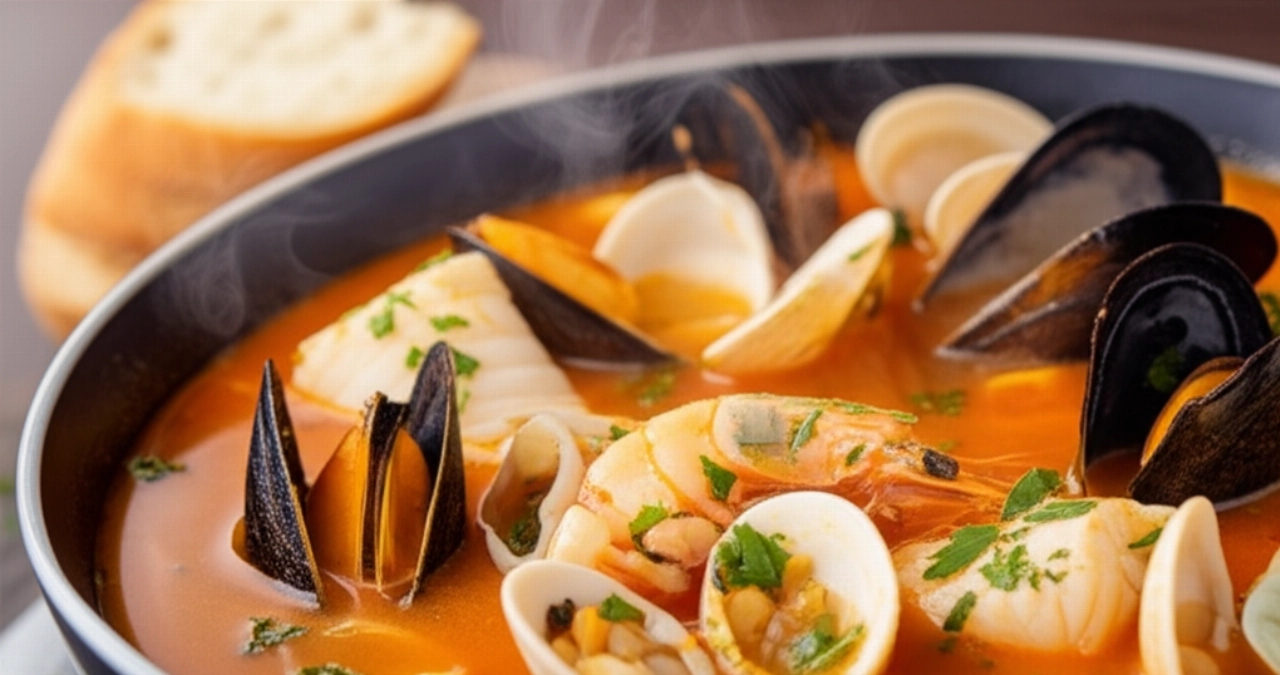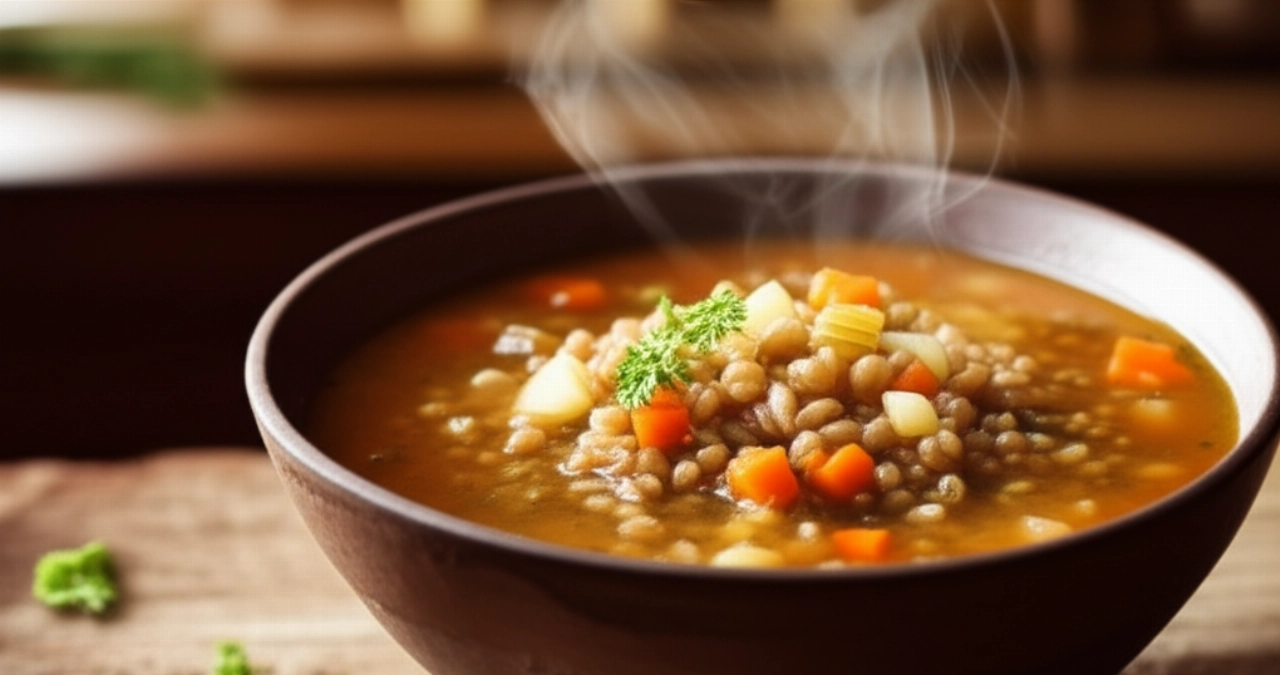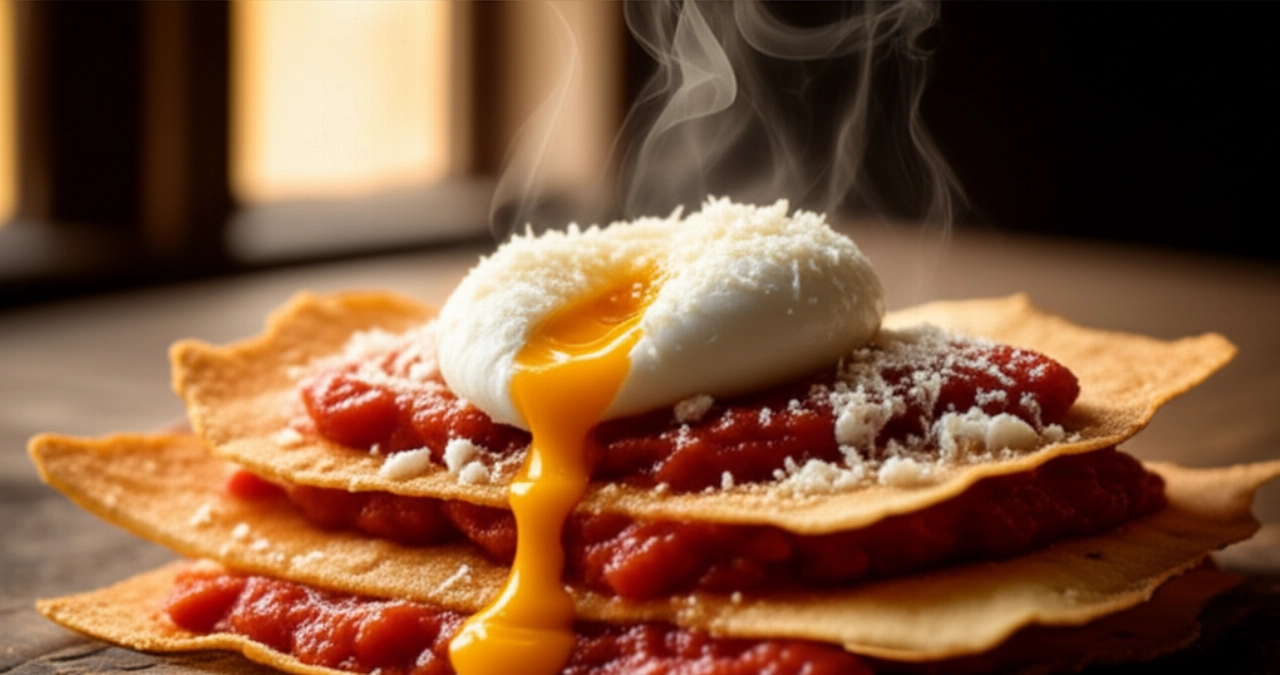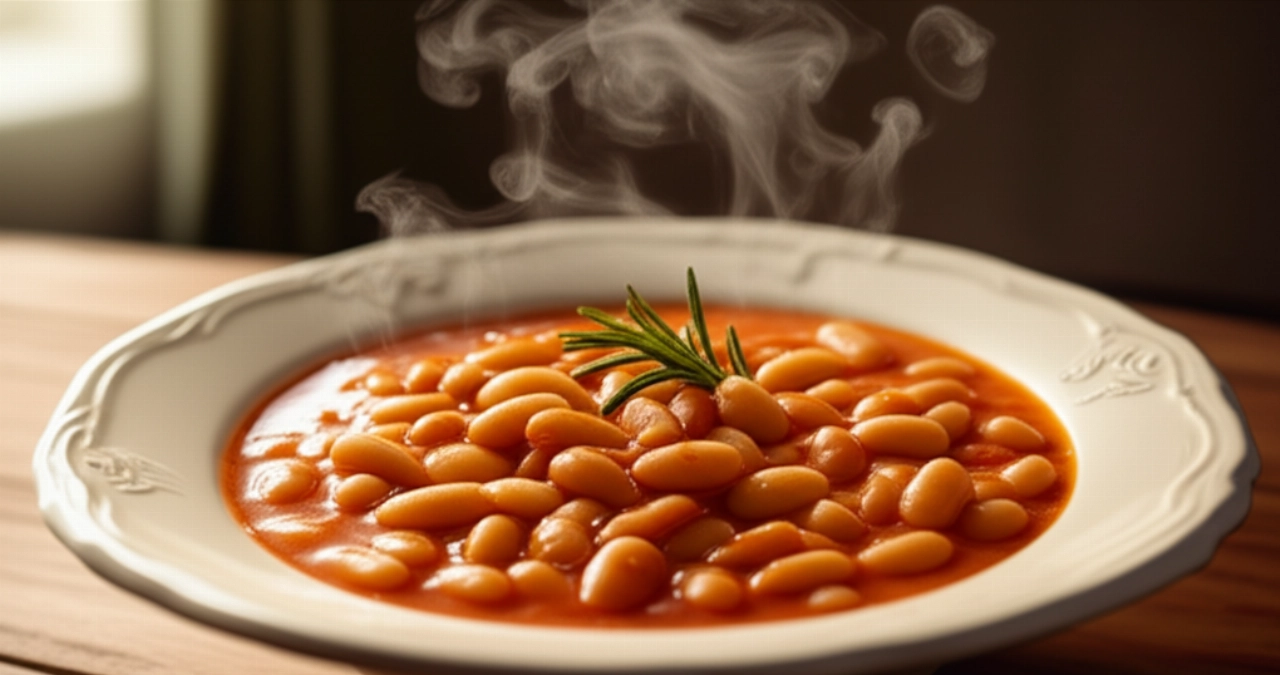Imagine the enveloping scent of the Tuscan countryside, a warm dish that cuddles your soul and brings you back to the most authentic flavors, those that taste of home and tradition. We are talking about Maremma Acquacotta, a peasant soup that, in its simplicity, contains a universe of taste and history.
But how many times have you tried to replicate a traditional recipe and found yourself with a result that didn't taste 'authentic'? Acquacotta, with its apparent simplicity, hides small pitfalls. Perhaps the bread didn't soften properly, or the vegetables lost their texture, or, the real challenge, that egg that needs to be perfect, not an omelet, but a soft, enveloping heart that melts into the soup.
Make yourself comfortable. Here you won't just find a list of ingredients, but the definitive, step-by-step guide, full of tricks and tips, to prepare the most authentic and delicious Maremma Acquacotta you've ever tasted. Success is guaranteed, and that egg will be a masterpiece that will make you feel like a true home chef. Get ready to receive compliments and hear: "This is the only Acquacotta I'll ever need!".
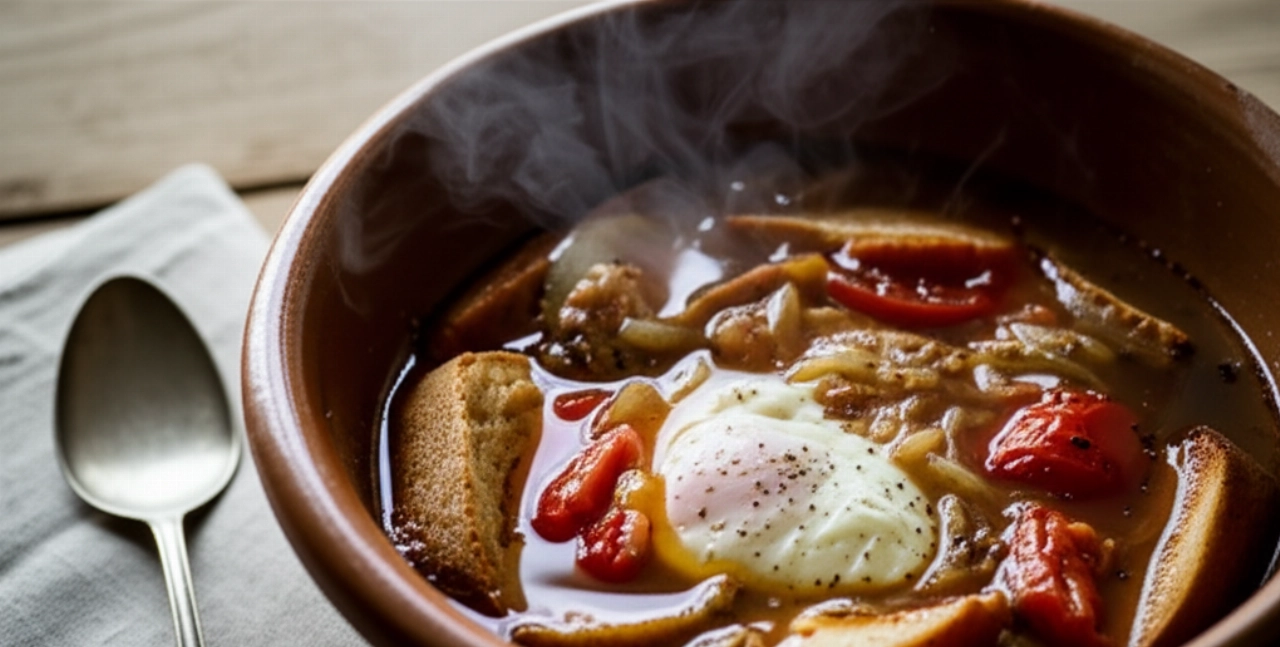
Smart Ingredients for Authentic Acquacotta: The Choice That Makes the Difference
For such a simple dish, the quality and choice of ingredients are everything. It's not just a list, but a true "philosophy" that will guide you to success.
- Stale Bread: This is the true silent protagonist. Do not use fresh bread! Stale bread, preferably Tuscan or homemade, has the right consistency to absorb the broth without falling apart too much, giving body and creaminess to the soup. I recommend cutting it into slices about two centimeters thick.
- Fresh and Seasonal Vegetables: Acquacotta originated as a "poor" dish that values what the garden offers.
- Onion: A nice red or golden onion, sweet and flavorful, is the base of the soffritto.
- Celery and Carrot: Essential for the soffritto, they add depth of flavor.
- Tomato: Good quality peeled tomatoes (if out of season) or fresh, ripe, and juicy tomatoes (in summer). Tomato adds that touch of acidity and color that balances everything.
- Potatoes: A medium potato, diced, will make the soup more substantial and comforting.
- Zucchini: For a touch of freshness and a slightly different texture.
- Fresh Mint or Basil: Don't underestimate them! Added at the end of cooking, they release an intoxicating aroma and a flavor that elevates the dish.
- Very Fresh Eggs: Choose eggs from happy hens, organic or free-range. Freshness is essential for a poached egg that doesn't break and has a creamy yolk. Keep them at room temperature for at least half an hour before using.
- Extra Virgin Olive Oil: A good EVO oil, perhaps Tuscan, is the main seasoning. Use it both for the soffritto and raw, at the end of the dish, to enhance the flavors.
- Aged Pecorino Toscano: A generous grating at the end of the dish is the final touch that cannot be missed. Its strong flavor pairs divinely with the sweetness of the vegetables.
- Water or Vegetable Broth: For cooking the vegetables. If you have time, homemade vegetable broth will give it an extra boost, otherwise water is perfectly fine, as long as it's of good quality.
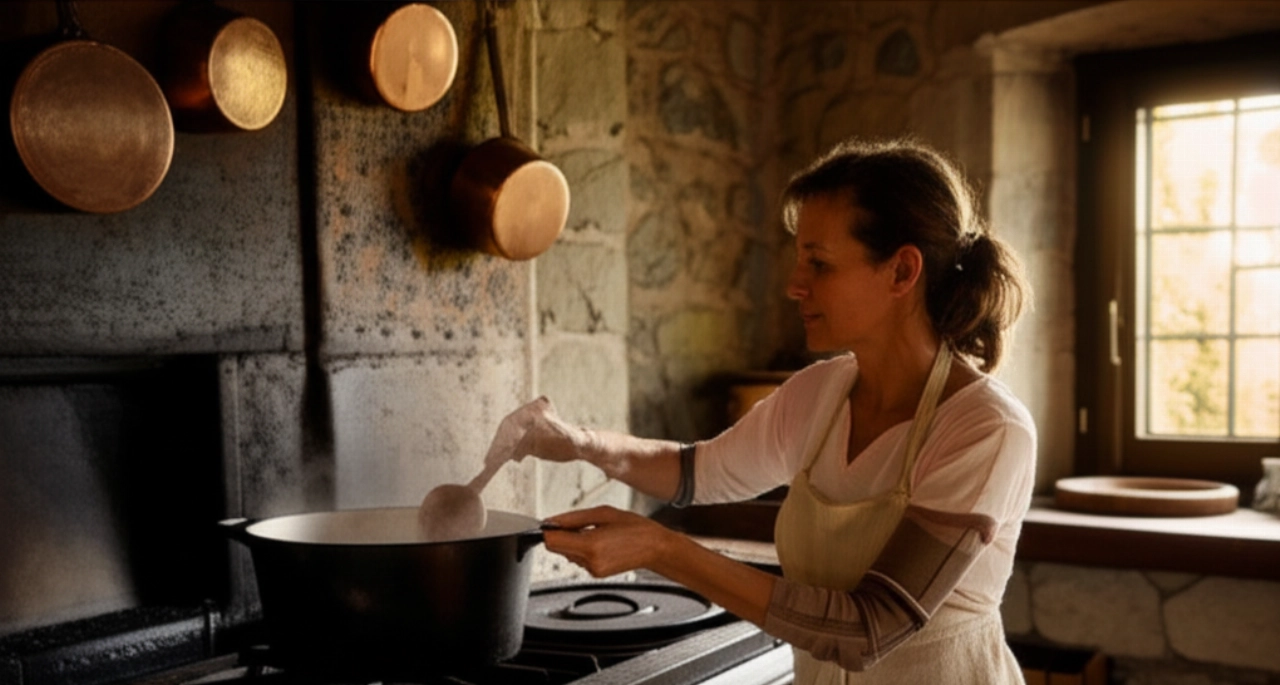
The 3 Common Mistakes in Maremma Acquacotta (and How to Avoid Them)
Even the simplest dishes hide pitfalls. Here are the mistakes to avoid to ensure the success of your Acquacotta:
- Not Using the Right Bread or Not Preparing It Well: The most common mistake is using fresh bread or not letting it soften enough. Stale bread is not optional, it's the soul of Acquacotta! If it's too hard, you can slightly moisten it with water before putting it in the bowls, but it shouldn't be soaked. It should absorb the soup, not float on top like a sponge.
- Overcooking the Vegetables: Vegetables should be tender, but not mushy. They should maintain a slight consistency that gives "body" to the soup. Add them gradually and respect the indicated cooking times. A burnt soffritto or overcooked vegetables would ruin the balance of flavors.
- Incorrect Egg Cooking: This is the real challenge for many! An overcooked egg becomes hard and rubbery, a broken one disperses into the soup. The secret is delicacy and the right temperature. I will reveal the infallible method to get a perfect poached egg, with a soft and enveloping yolk, directly in the soup or separately, without stress.
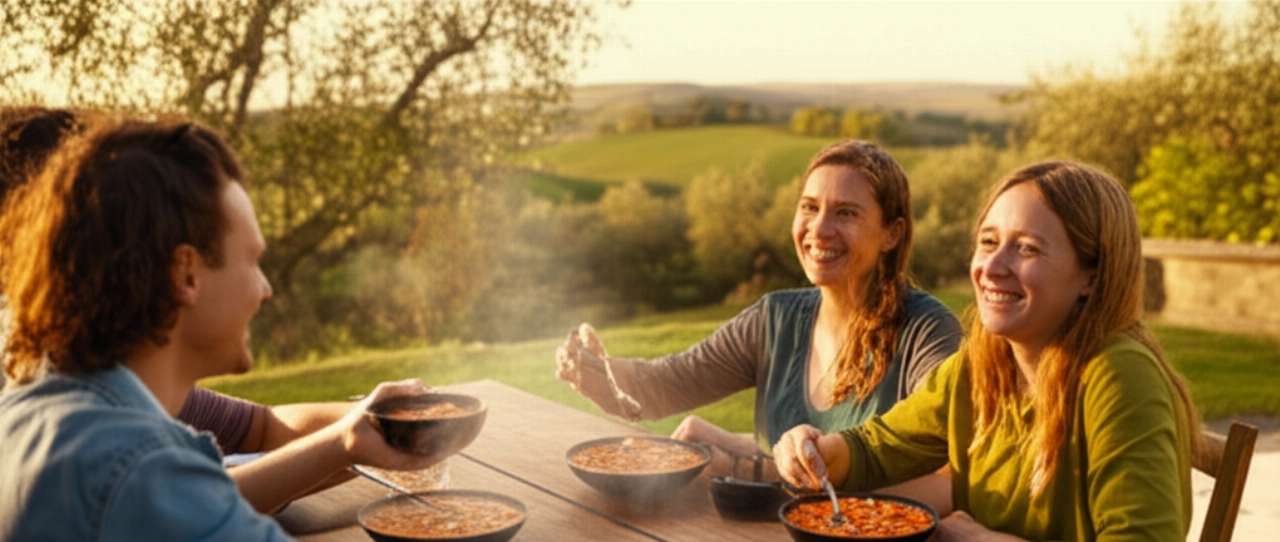
Grandma Elara's Secret: A Touch of Authenticity from Maremma
My grandmother Elara, who knew Maremma like the back of her hand and every flavor of her land, always said that the secret of Acquacotta lies not only in the ingredients, but in the patience and love with which they are prepared. "Don't rush," she would tell me, "every vegetable has its time to release its aromas."
One of her tricks, which she passed down to me and few know, was to add a pinch of finely chopped fresh chili pepper along with the soffritto, if desired. It shouldn't dominate, but give a slight "zing" that awakens the palate and pairs wonderfully with the sweetness of the vegetables. And then, a drizzle of good raw olive oil at the end makes the difference between a good soup and an unforgettable Acquacotta.
Let's Prepare Maremma Acquacotta Together: The Step-by-Step Guide
Now that we have all the secrets, let's get cooking! Follow these steps with confidence, and success will be assured.
- Carefully Prepare the Vegetables:
- Clean and finely chop the onion, celery, and carrot for the soffritto.
- Wash and dice the potatoes and zucchini.
- If using fresh tomatoes, wash them, score a cross on the bottom, blanch for one minute, peel them, remove the seeds, and cut into pieces. If using peeled tomatoes, lightly crush them with a fork.
- The Fragrant Soffritto:
- In a large, heavy-bottomed pot (ideally terracotta or cast iron), pour a generous drizzle of extra virgin olive oil.
- Add the chopped onion, celery, and carrot. Sauté gently over low heat for about 8-10 minutes, until the vegetables are soft and translucent, without browning. This is where the flavor base is built! If using chili pepper, add it now.
- Add the Tomato and Water:
- Combine the tomato (fresh or peeled) with the soffritto. Cook for 5 minutes, stirring.
- Pour about 1.5 liters of hot water or vegetable broth. Bring to a boil, then reduce the heat, cover, and let simmer for about 15-20 minutes, to allow the flavors to meld.
- It's Time for Potatoes and Zucchini:
- Add the diced potatoes and zucchini to the pot. Salt and pepper to taste.
- Continue cooking over low heat for another 15-20 minutes, or until the vegetables are tender but still slightly firm. Taste to check for doneness and flavor balance. If the soup dries out too much, add a little hot water.
- Prepare the Bread:
- While the soup is cooking, arrange the slices of stale bread at the bottom of individual bowls (one or two slices per serving, depending on size).
- The Crucial Moment: The Perfect Poached Egg:
There are two ways to make poached eggs for Acquacotta. Choose the one that makes you feel most comfortable:
- Directly in the Soup (Traditional Method):
- When the soup is almost ready and gently simmering, create small indentations with a ladle on the surface.
- Gently crack one egg at a time into a cup or small ladle, then gently slide each egg into an indentation in the soup.
- Cover the pot and cook for 3-4 minutes, or until the egg white is set and the yolk is still soft and creamy. Do not stir!
- Separately (Panic-Proof Method):
- In a separate small pot, bring plenty of water to a boil with a tablespoon of white vinegar (helps the egg white set).
- Reduce the heat to minimum, almost off, so the water is just barely trembling.
- Crack an egg into a cup and gently slide it into the water. Cook for 3-4 minutes.
- With a slotted spoon, drain the egg and place it on absorbent paper to remove excess water. Repeat for the other eggs.
- Directly in the Soup (Traditional Method):
- Plating and Final Touch:
- Pour the hot soup over the bread slices in the bowls.
- Gently place a poached egg on each serving.
- Finish with a generous grating of Pecorino Toscano, a drizzle of raw extra virgin olive oil, and a few fresh mint or basil leaves.
- Serve immediately and enjoy every spoonful!
Tips and Frequently Asked Questions about Maremma Acquacotta
Here are some answers to the most common questions to clear any doubts and make you feel even more confident in the kitchen.
Can I use fresh bread for Acquacotta?
Absolutely not! Stale bread is essential. Fresh bread would fall apart too much and wouldn't absorb the soup correctly, altering the final consistency and flavor of the dish. If you don't have stale bread, you can slice fresh bread and lightly toast it in the oven to harden it a bit.
What other vegetables can I add to Acquacotta?
Acquacotta is a versatile and "poor" dish, so you can adapt it to what you have in the fridge or to the season. Excellent additions can be spinach, chard, black cabbage (typical of Tuscan cuisine, to be added with potatoes), green beans, or even porcini mushrooms (if in season) for a richer touch. The important thing is to respect the cooking times of the different vegetables.
Can I prepare Acquacotta in advance?
Yes, you can prepare the soup base (without bread and eggs) even the day before. In fact, it often tastes even better the next day because the flavors have melded better. When serving, reheat the soup, then add the bread to the bowls and cook the poached eggs at the last minute, either directly in the hot soup or separately, as you prefer.
How can I be sure to make a perfect poached egg?
The secret is the freshness of the egg and the water temperature. The water should not boil vigorously, but simmer gently. Vinegar helps the egg white set quickly around the yolk. Crack the egg into a cup and gently slide it in. Do not touch it until the egg white is well coagulated. With a little practice, it will become a breeze!
Is Acquacotta a vegetarian dish?
Yes, Maremma Acquacotta is a naturally vegetarian dish, provided you use water or vegetable broth for cooking. It's an excellent option for a complete and nutritious meat-free meal.
Your Masterpiece of Authenticity: An Embrace from Maremma
There you have it! Now you no longer just have a recipe, but all the secrets to bring to the table a dish that tastes of home, tradition, and love. Maremma Acquacotta is more than just a soup: it's a journey into the authentic flavors of Tuscany, a warm embrace that envelops and nourishes you.
Don't be afraid to experiment and make this recipe your own. Cooking is an act of creativity and sharing. But start with this solid and infallible base, and you'll see that applause will not be lacking. The aroma that will emanate from your kitchen will be the first reward.
Have you tried our Maremma Acquacotta recipe? We are very curious to see your masterpiece! Leave a comment below, tell us how it went, or share a photo on Instagram by tagging @CercaRicette.it. If you loved this rustic and comforting soup, you can't miss our recipe for Pappa al Pomodoro, another heart-warming Tuscan classic, or Ribollita Toscana, for another authentic taste experience.
